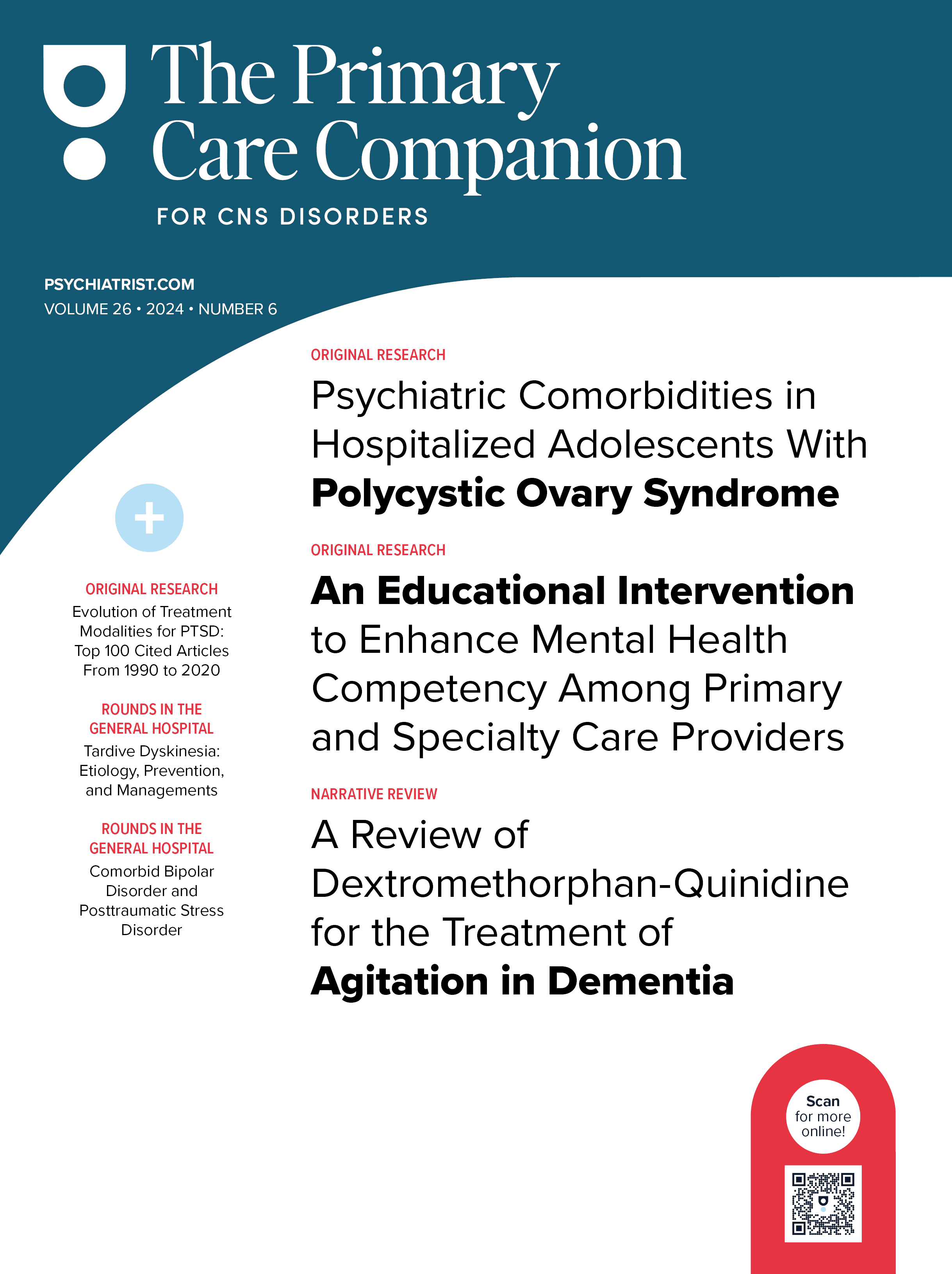Objective: Individuals visiting a primary care practice were screened to determine the prevalence of depressive disorders. The DSM-IV-TR research criteria for minor depressive disorder were used to standardize a definition for subthreshold symptoms.
Method: Outpatients waiting to see their physicians at 3 community family medicine sites were invited to complete a demographic survey and the Primary Care Evaluation of Mental Disorders Patient Questionnaire (PRIME-MD PQ). Those who screened positive for depression on the PRIME-MD PQ were administered both the PRIME-MD Clinician Evaluation Guide (CEG) mood module and the Hamilton Depression Rating Scale (HDRS) by telephone. Data were collected over a 2-year period (1996-1998).
Results: 1,752 individuals completed the PRIME-MD PQ with 478 (27.3%) scoring positive for depression. Of these 478 patients, 321 received telephone follow-up using the PRIME-MD CEG mood module and the HDRS. PRIME-MD diagnoses were major depressive disorder (n = 85, 26.5%), dysthymia (n = 31, 9.6%), minor depressive disorder (n = 51, 15.9%), and no depression diagnosis (n = 154, 48.0%). The mean HDRS scores by diagnosis were major depressive disorder (20.3), dysthymia (12.9), minor depressive disorder (11.7), and no depression diagnosis (5.8). Post hoc analyses using Dunnett’s C test indicated differences between each of the 4 groups at P ≤ .05, with the exception that dysthymia and minor depressive disorder were not significantly different.
Conclusions: Minor depressive disorder was more prevalent than dysthymia and had similar symptom severity to dysthymia as measured by the HDRS. More research using standardized definitions and longitudinal studies is needed to clarify the natural course and treatment indications for minor depressive disorder
This PDF is free for all visitors!
Save
Cite




